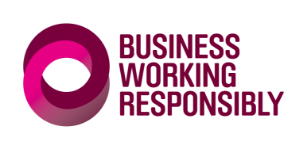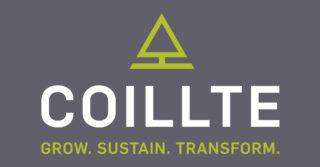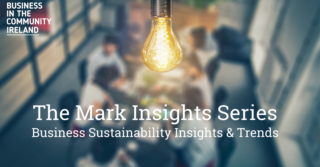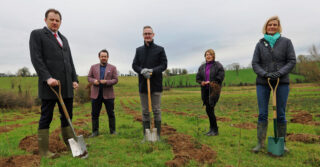Environmental trends
Business Working Responsibly Series: Environmental Insights
Welcome to our second article in our new series Business Working Responsibly mark Insights with trends from our 40 Business Working Responsibly Mark certified companies. While the insights are gleaned from all of our certified companies, particular attention is focused on the most recent trends from our current cohort under the new certification process. This week we look at the Environmental pillar.
Environmental Key Insight: Carbon Maturity and Climate Adaptation
Addressing the threat of climate change through carbon emission reduction is at the forefront of many corporate agendas. There is a renewed sense of urgency that followed from COP26 where we assessed the progress toward the targets set out in the 2015 Paris Agreement. This is compounded by the latest report from the Intergovernmental Panel on Climate Change which unequivocally states that human influence has warmed the atmosphere, oceans and land leading to widespread and rapid changes. Unless immediate and significant action is taken, Global warming of 1.5°C and 2°C will be exceeded during the 21st century.
The business case for the low carbon transition is clear. Mark companies have responded with measurable carbon emission reduction targets underpinned by detailed plans, which are monitored, evaluated and reported to senior leadership who provide oversight and drive improvement. These detailed plans are a requirement for Mark certification. Leading companies are going even further by adopting Science-Based Targets, which explicitly commit them to limiting Global warming to 1.5˚C from pre-industrialised levels. This type of target setting ensures that emissions across the entire value chain (direct and indirect) are accounted for, and that the primary focus is on the most material emission sources.
What tends to be less mature across the Mark companies and industry in general, but is something that again, must be developed to qualify for the Mark standard, is addressing the effects of climate change. Most companies have business continuity plans which cite physical risks to facilities and personnel, but referencing the IPCC report above, increasingly severe weather fundamentally disrupts supply chains as well, particularly in sensitive areas more susceptible to the impacts of climate change. It’s not enough to look solely at the operational footprint, leading Mark companies view climate risks with a broader lens and incorporate them more strategically into business plans.
Environmental Key Insight – Managing Environmental Impacts from the inside out
Carbon, Biodiversity, and the Circular Economy are intrinsically linked through the role they play in addressing climate change. Climate change is having a knock-on effect on biodiversity loss and with that comes significant ecosystem disruption and the priceless services that they provide like clean air, water purification, and pollination supporting our food systems. Improving biodiversity would help to protect us against climate change as would adopting circular business models. It’s believed that 60% of climate change could be addressed by a fully circular global economy.
While for the past several years we’ve noticed that organisations are starting to understand the importance of their role in biodiversity, and while there are several examples of organisations whose entire business models are built around the circular economy, many companies are still struggling with transitioning to more nature-based and circular practices. We are seeing a more strategic approach with Mark companies though. They have, particularly where this is a highly material area, developed strategies to first understand their biodiversity and waste footprints, and then on the back of that analysis, developed comprehensive plans to improve their impact.
Focusing on impact (rather than on inputs and outputs) is one of the key indicators of maturity. In the case of biodiversity this includes the incorporation of restorative practices, in the case of circular economy, companies are moving upstream from waste and recycling improvements to prevention. To support this progress, the Mark provides a framework for action with its management system approach – starting with strategic commitments, underpinned by plans with measurable targets that are evaluated, reported, and improved upon over time.
Leading Mark companies are following an “inside out” approach where once they’ve built internal structures, they begin to extend those practices into their supply chains, amplifying the positive impact. This often requires these companies and their suppliers to find new ways of working and new types of partnerships which can have a transformative effect on their business and hopefully, ultimately the wider economy as well.
Key Insight – ISO 14001 Bridging
Our last key insight is perhaps more of an observation but stems from our new Mark certification process which incorporates relevant “bridging” certifications, particularly those issued through the International Organization for Standardization (ISO).
There are several ISO environmental standards but the most comprehensive is 14001, which requires a company to develop and maintain a documented Environmental Management System (EMS) which meets the criteria of the standard. The company decides, through its list of Aspects and Impacts, which environmental areas are of highest impact and therefore relevance to them. For areas in scope of the EMS, a robust management system structure must be in place, founded on legal compliance, but sufficient to address all of the impacts (or risks) that have been defined by the company.
For companies with current and compliant ISO 14001 certifications, the Mark bridges (excludes from audit) those topics which have been incorporated into the company’s EMS. This can be a time saver, but what we’ve found is that because ISO is focused largely on operational compliance, where in contrast the Mark is focused more on environmental impact across the value chain, the two standards aren’t quite an equal match. Biodiversity and employee travel often tend to be excluded from the list of Aspects and Impacts. While our process does accommodate partial bridging, we are finding that most companies going through the certification process are using this as an opportunity to rethink, and in some cases broaden their ISO focus.
Find out more
This article has discussed some of the Environmental insights that we are seeing across our Mark companies and we hope that it informs your sustainability journey. The Mark Sustainability Standard Certification Service provides an assessment for organisations who wish to understand their maturity within these new expectations and a certification process for those organisations who have the requisite management systems already in place.
Find out more about the leading sustainability certification The Business Working Responsibly Mark.
If you are a member please contact your Adviser for more information.







